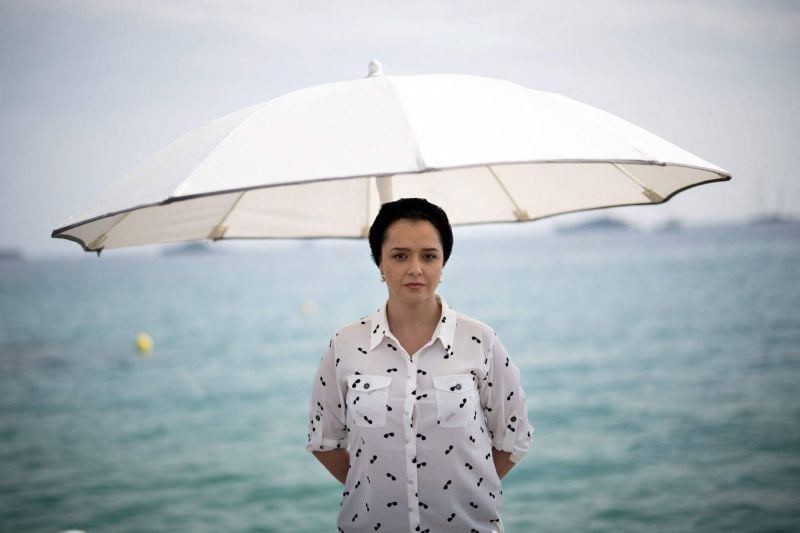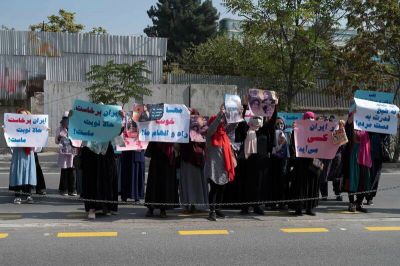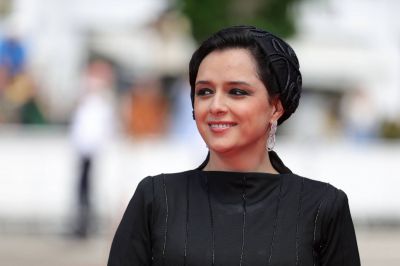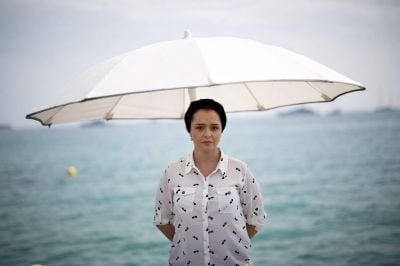
Archive photo of Iranian actress Taraneh Alidoosti at the Cannes Film Festival, France, on May 26, 2022. (Credit: Loic Venance/AFP)
Cinema, the sweet spot through which the outside world can see the ills and words of Iranians, is one of the rare valves of freedom in daily life plagued for the past 43 years by government censorship.
Since the death in police custody of Mahsa Amini, a 22-year-old Kurdish woman accused of, wearing an ill-fitting headscarf, triggered a popular uprising across all of the country's social classes and regions, the unspoken resistance offered by cinema — the so-called “seventh art” — has been overtaken by the implacable force of reality.
Hundreds of Iranian women removed their veils in public, young people knocked the turbans of the mullahs off their heads, while the security forces have targeted protesters, finding no other way than beatings and bullets to maintain an increasingly contentious lead.
At least 476 people have been killed since the movement began on Sept. 16, according to Iran Human Rights, and some 15,000 have been detained. They include more than 100 workers in the film and theater industry, according to the Norway-based NGO, most notably the actress Taraneh Alidoosti.
In this society, both closed and flourishing, cinema represents the main source of expression and protest, and therefore an art that is prey to censorship in all its forms, Asal Bagheri, a research professor at the University of Paris Cergy, semiologist and specialist in Iranian cinema, such as L'Orient-Le Jour.
On Dec. 17, the famous actress Taraneh Alidoosti was detained after showing her support for the Iranian protest movement. Faced with this uprising that has been ongoing for more than 100 days, has the reaction of the film community been unequivocal?
It is important to note that Iranian artists have been under surveillance for 43 years. They include filmmakers even more so because cinema is the most contentious and popular art in Iran. Visual art is also involved in protest, but it is reserved for galleries in the wealthy neighborhoods of northern Tehran, which makes it less accessible than the black screen. Iran is, since the birth of this art, a country of cinema. Paradoxically, it is also the country where the censorship of cinema is one of the most severe and puritanical in the world because it applies both to the works and artists. Their movements, their speeches, the way they dress during festivals: everything is controlled by the authorities.
Since President Ebrahim Raissi came to power [onAug. 3, 2021], the repression has increased tenfold. The filmmakers Jafar Panahi, Mohammad Rasoulof and Mostafa al-Ahmad were arrested this summer for signing a simple petition. This had followed a wave of arrests of documentary filmmakers in the spring. Thus, following the death of Mahsa Amini, it took some time for the filmmakers to speak out. Some still haven't. On the one hand, because they are under pressure — having been under surveillance all their lives — they know that the authorities have information about their private lives and that they can pay dearly for it. On the other hand, Iranian cinema is not a unified body, so everyone reacts individually, like the famous director Asghar Farhadi, one of the first to support the movement in a video published in English. Now, the expression of one’s solidarity inevitably exposes them to reprisals, so it takes a lot of courage.
It seems contradictory from the outside that a critical and independent cinema could be born in Iran, in the middle of such an atmosphere of censorship. How do you explain this paradox?
When Ayatollah Khomeini arrived in Tehran, in his first founding speech of the revolution at the cemetery of Behesht-e Zahra, he spoke about cinema. At the time, people were burning down movie theaters, symbols of the country's Westernization and decadence. Khomeini said that the Islamic Republic was not opposed to cinema, but to the vice that reigned within it. This set the previous that cinema existed and they were going to use it. Since then, Iranian cinema has several faces. On the one hand, there is a plurality of filmmakers close to the values of the regime. On the other hand, there is a cinema that is more independent of the ideology of the Republic, which the latter allows to exist for two reasons. For the outside, this cinema allows for showing the greatness of Iran and the presence of freedom, to counter the image of a closed country. For the inside, this independent cinema serves as a valve of expression: Iranians have no means of protest, so going to see these films gives them a feeling of freedom, at least for the duration of a screening.
Can you recall some of the key films that echoed the deep aspirations of Iranian society, the very ones that are coming to light with the protest movement?
In Iranian independent cinema, there are films that have been a hit with moviegoers outside the country, but that have gone virtually unnoticed inside, such as [Abbas] Kiarostami's cinema, which is known but rarely seen. On the other hand, there are films that are little known outside Iranian borders, but that have profoundly changed society. For example, in the 1990s, when Iranian cinema was flourishing, filmmaker Dariush Mehrjui made five films in a row about women trying to emancipate themselves from the weight of patriarchy. At the same time, Iranian women are trying to understand what happened to them during the revolution and the years of war [between Iran and Iraq, from 1980 to 1988]. These films echoed their desire for liberation.
I am also thinking of Bahram Beyzaei's film, Bashu, the Little Stranger. Released in 1989, at a time when many films supported the war, it instead showed the devastation through the story of an orphan taken in by an independent woman. It was censored for many years. Finally, the films by filmmaker Rakhshan Banietemad come to mind, both popular and taboo-busting. In 1992, in Nargess, she depicts a love triangle between a thief and an older thief who is also a prostitute. When the former falls in love with a younger woman, she decides to take on the role of his mother to stay with him. This is the first film to break the image of the pure woman; in its wake, other women's profiles may begin to emerge on the screen.
The fact remains that, unlike Iranian films that dodge censorship by expressing themselves through euphemisms and unspoken words, the current protest movement breaks taboos in a straightforward manner.
It is true that Iranian cinema is suggestive and coded. It has a particular grammar and aesthetic created in response to censorship, which those who are used to understand it better than others. while a certain social cinema has set itself the task of being the mirror of Iranian society, everyone knows that this reflection cannot be complete. Cinema tries to show pieces of reality that we then put back together in our imagination. It says as much by what it shows as by what it leaves out of the frame. In this sense, society moves faster, because it manages to break the rules with more spontaneity than a cinema that bypasses censorship.
Will this movement change Iranian cinema?
Currently, in response to the protest movement, some filmmakers are sorry for having to show veiled women because of censorship. There are rumors that some of them are now shooting their scenes twice, with and without the veil, anticipating possible upheavals due to the protest. While it is still too early to know the nature of these changes, one thing is certain: there is no turning back for the cinema. More than 150 documentary filmmakers stated in a communiqué that they refuse to participate in Iranian festivals to denounce the impossibility of filming reality. For fiction, it is more complicated, given the enormous economic stakes of the sector. But I have a lot of confidence that Iranian cinema will be able to adapt to the current changes and make something intelligent out of them, as it has always been able to do.
This article was originally published in French in L'Orient-Le Jour. Translation by Joelle El Khoury.


